Case Study:
Screen for COVID-19 using AI technology

The Problem:
Virufy, a small non-profit, needed to refine it’s experience for gathering data vital to its mission.
The Solution:
I provided a focused, multi-round usability audit of the existing form and recommended key UX and UI updates to refine and clarify the experience.
My Role:
- UX Research
- Prototyping
- Usability Testing
- Interaction Design
- Visual Design
The Brief
Virufy is a nonprofit research organization which, - with the help of cutting edge research from Stanford, Princeton and Cambridge - is developing artificial intelligence (AI) technology to screen for COVID-19 by analyzing cough patterns, rapidly and at no cost through use of a smartphone.
In order to build the most robust algorithm possible, Virufy created a collection study to allow users to easily contribute a recording of their cough to their database, which directly informs the diagnostic model.
Virufy’s mission is to ensure greater racial and spatial inclusivity through data that includes a range of ethnicities and community-specific phonological differences. To meet this goal, Virufy needed help to refine this collection study experience to ensure ease-of-use, clarity and reflect best practice UX principles to help it succeed on a massive scale.
The Approach
In order to ensure maximum impact on a short timescale, I conducted two rounds of remote usability testing with potential users on apps like Zoom and Jitsi, and two rounds of design iterations on the collection study informed by user feedback.
Usability Testing
Over the course of these two rounds of usability testing, I uncovered several high priority usability issues that needed solutions:
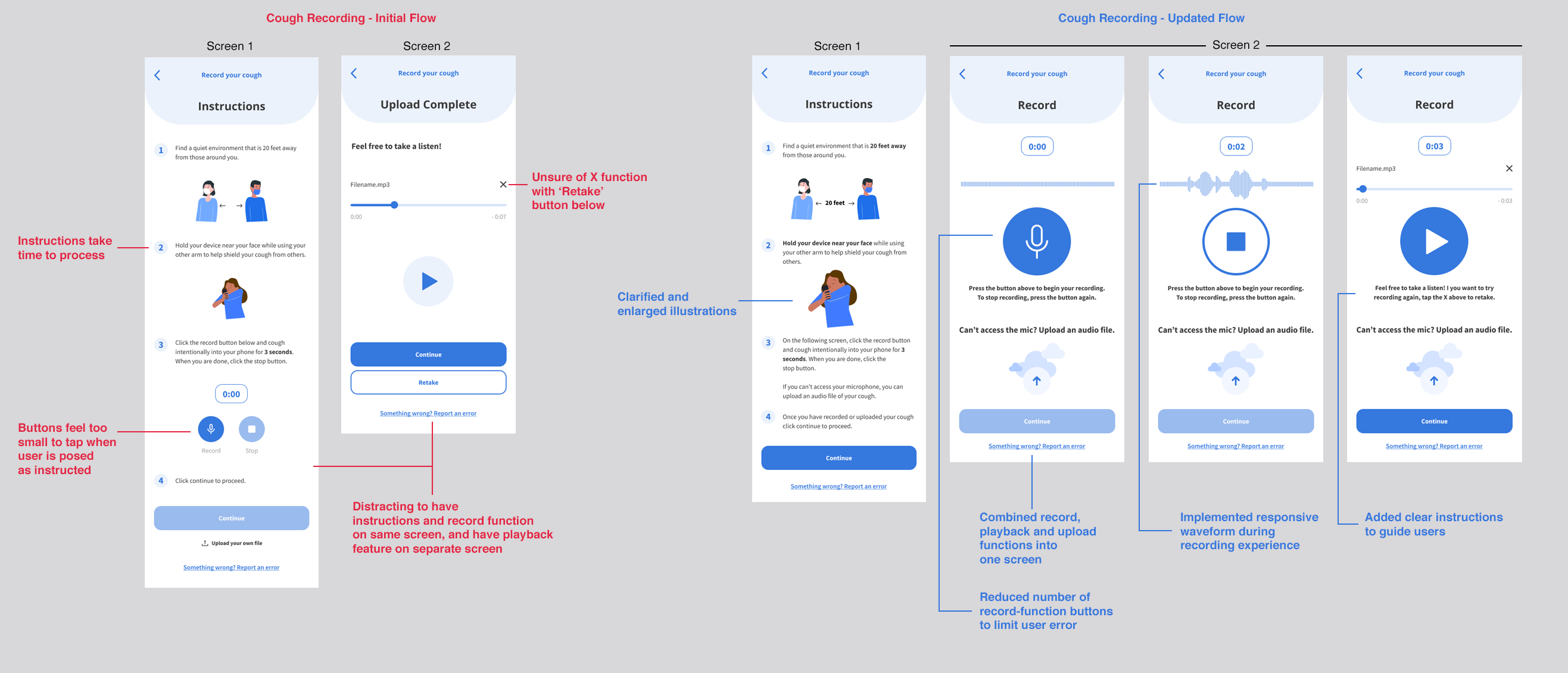
One of the biggest issues was that users had difficulty completing the cough recording step; the buttons to ‘record’ and ‘stop’ were too close together and might be difficult to be completed on mobile. The playback experience was also reported as being confusing. As the key component of this collection study, any issues with the cough recording experience automatically became high-priority.
From this user feedback, I streamlined the cough recording experience by combining features previously on several screens to one screen, while increasing legibility of instructions and the accompanying illustrations. The results tested favorably!
From this user feedback, I streamlined the cough recording experience by combining features previously on several screens to one screen, while increasing legibility of instructions and the accompanying illustrations. The results tested favorably!
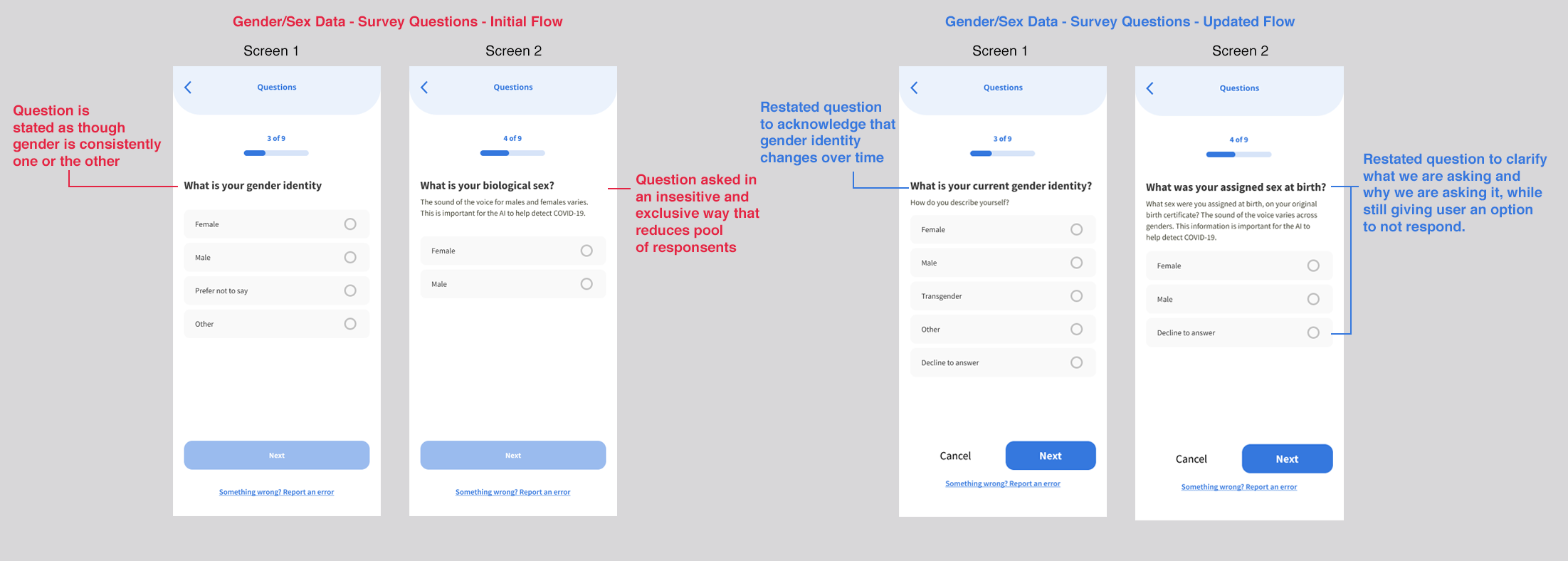
Another high-priority issue was with the survey questions following the cough recording step - the user is asked to self-identify their sex and gender identity. This data is important to collect for the algorithm to be validated, but it was asked for in a somewhat limited and exclusionary way. It is important that this tool be used to help as broad a range of lived experiences as possible, and so gathering this data in as respectful and efficient a manner is key to product success.
I researched best-practice solutions for gathering gender identity data in a clinical setting and found that preserving the two-step approach (asking gender identity separately from sex) was suitable. The solution was in updating the language to respect and represent the broadest extent of gender expression possible.
I researched best-practice solutions for gathering gender identity data in a clinical setting and found that preserving the two-step approach (asking gender identity separately from sex) was suitable. The solution was in updating the language to respect and represent the broadest extent of gender expression possible.
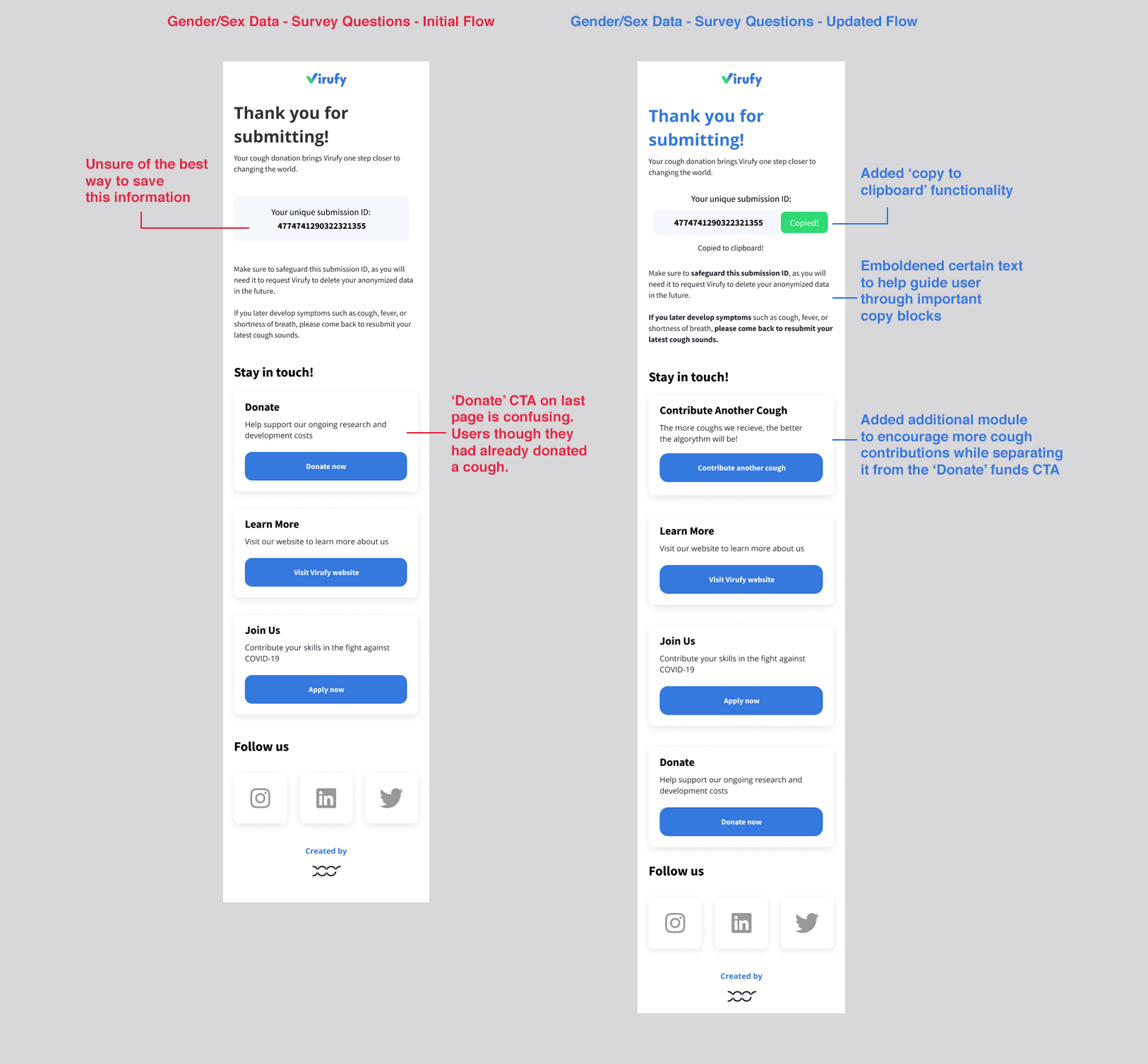
Several common pain-points for our users were on the final confirmation screen. Here I wanted to reassure the user that we had received their cough submission while also surfacing various ways they might keep in touch with Virufy. The ‘Donate’ module was confusing to users at first glance, as they assumed that they had already donated a cough. Users were also unsure of the best way to save their unique Submission ID.
Adding a save to clipboard feature gives the user an extra option to save their unique submission ID, and tested well when implemented. An additional ‘Contribute Another Cough’ module was introduced to separate the concept from donating money, but also adding another reason to continue using the app!
Adding a save to clipboard feature gives the user an extra option to save their unique submission ID, and tested well when implemented. An additional ‘Contribute Another Cough’ module was introduced to separate the concept from donating money, but also adding another reason to continue using the app!
Final Iteration

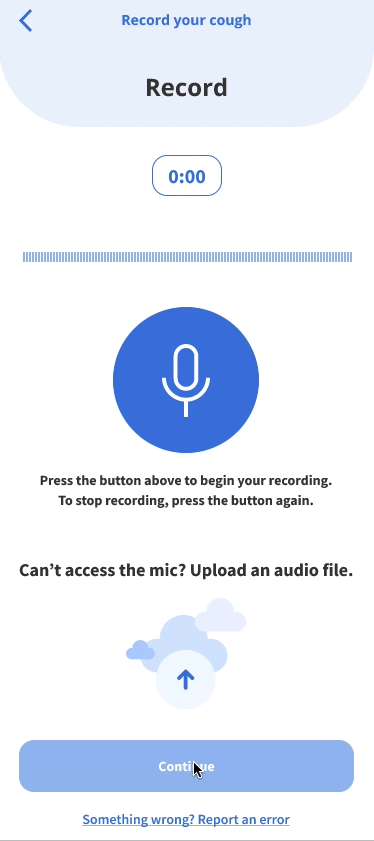
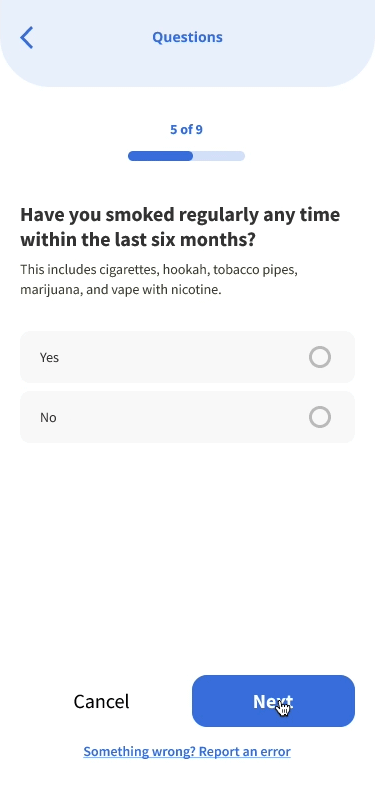
This short research and design effort led to significant improvements to Virufy’s collection study, reducing user error and cognitive load, more accurately aligning their data collection methods with their mission, and increasing potential user engagement.
Next Steps
Virufy will use this collection study to build a massive dataset of COVID cough sounds. This dataset will help inform the function of a globally-launched app, which will be an effective replacement for costly COVID testing measures. Once approved by local health authorities, the smartphone app will be released in low-income countries and will allow for mass-scale, anonymous testing to help to slow the virus’ spread.
Beyond COVID, Virufy hopes to collaborate with partners around the globe to help create a future where anyone with a smartphone can detect serious illnesses before they spread.